Introduction
Labrador have a special and innate passion for water. They can easily swim and even dive. It is in their blood, i.e. they do not need learning to swim. Labradors can swim at a speed of more than five kilometers per hour.
It is hard to believe, but it is two times faster than the ducks do! Now you may have several questions like “is it real”? How long can they be underwater? What helps them to stay resistant in water? This article helps to lighten the dark of these and other questions.
What Makes them the Best Dog “Swimmers”?
A special feature of the breed is its tail. Thick at the base, it runs in the water, like a wheel. They are not afraid of ice water and never get cold because of its hardening. Some people enen use them as rescuers under the water.
As they are fast and do not require a special learning. Dogs of this breed are ready day and night to dabble in the water. Of the total list, Labradors, like all retrievers, allocates webbed feet. These natural fins make Labrador best swimmers among dogs.
.
In addition, they will be the best company for young children who are afraid of water or just start to learn swimming. These dogs are always cheerful and dedicated.
History of the Breed
The ancestors of Labrador dogs were dogs of North American Indians. Newfoundland residents have used the descendants of these dogs for hunting, rescue people, pulling chains of cold water. The Europeans who came to the island of Newfoundland, called stunted and hairless dogs Labrador dogs or Labrador. Then, this particular breed of dog bred and trained to help Portuguese anglers.
In the middle of the XlV century, these dogs were widespread throughout the coast of Portugal, and became popular for their excellent ability to swim. They were used as retrievers, giving dropped out networks of fish and even used for rescue work. Therefore, the Portuguese going on a fishing to the coast of Newfoundland, always took these dogs with them.
What does Mean Labrador?
From the Portuguese word “Lavrador” means “employee” or “worker”, therefore the anglers’ dogs coming to Newfoundland, called Labrador.
Some owners crossed them with the St. John’s island dogs and called the small puppies Newfoundland, Labrador or St. Johns dogs. Dogs that were born from this mating were valued as capable retrievers for their water resistance and their saber tails.
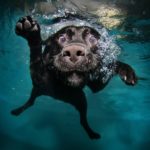
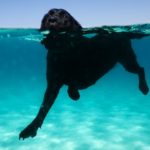
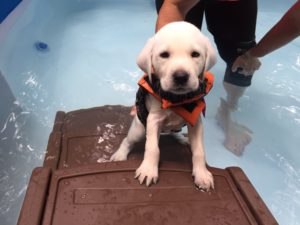
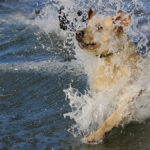
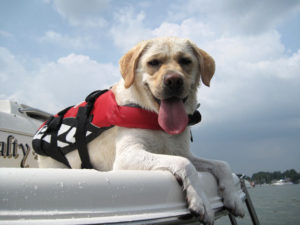
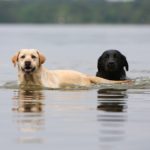
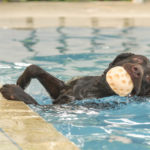
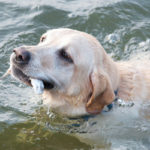
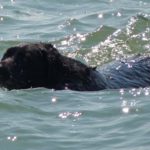


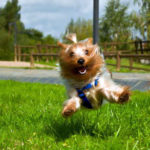

My Labs have always been great swimmers but when I swim with them – they always tend to grab my arms or hand to bring them to shore – sometimes they scratch me – I’ve taught them to swim since 6 months – I now only have 1 Lab – with three prior – but everyone of them has tried to grab me when I swim with them – Thank you